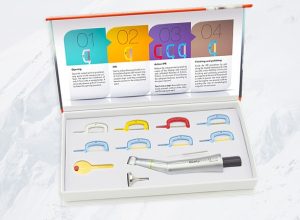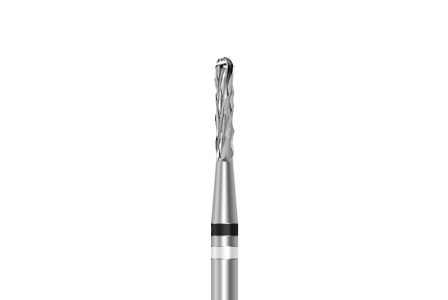

Interproximal reduction (IPR) is a procedure that involves removing enamel from the sides of teeth to create space between them. This is mainly done for orthodontic purposes to allow the teeth to align correctly.
Interproximal reduction can be done in two ways – manual and mechanical. In this blog, we’ll compare the two methods to understand which is more effective.
Manual Interproximal Reduction
Manual IPR involves using dental strips to manually remove the enamel on the sides of teeth. The dentist uses a predetermined thickness of the dental strip to grind away at the enamel until the desired amount has been removed.
Mechanical Interproximal Reduction
Mechanical IPR, on the other hand, involves using a dental handpiece with also with predetermined diamond discs or diamond burrs to remove the enamel. This method is faster and less labor-intensive than the manual approach. The dentist has greater accuracy over the thickness of the reduction, and the process can be less time-consuming.
Comparison
Both manual and mechanical IPR methods have their advantages and disadvantages. Here are some critical comparisons between the two:
- Accuracy
Mechanical IPR is more accurate than manual IPR because the discs/burrs used in the mechanical process are calibrated to achieve a specific enamel reduction thickness. In contrast, manual IPR is done by hand and may not be as accurate, leading to uneven enamel removal.
- Time taken
Mechanical IPR is considerably faster than manual IPR. The mechanical method can remove enamel in a matter of seconds compared to the manual process, which can take several minutes, depending on how much enamel is being removed.
- Comfort of the patient/applied pressure
Manual IPR can occasionally be slightly more uncomfortable option for the patient because the hand-held dental strips can occasionally get stuck which can sometimes lead to more pressure being applied by the user (See the attached image above) although manual IPR can take longer they generally will not generate heat which could cause pain for the patient. Some mechanical IPR handpieces can generate heat that can be uncomfortable during enamel removal. However, dentists can use water spray to reduce the heat and discomfort for the patient.
The image attached is a study performed at Darmstadt University, Germany by 9 Orthodontists who performed both manual and mechanical IPR. The mechanical system used was provided by DentaSonic as you will see by the results manual IPR had an average applied pressure of 4.8N of pressure (489 grams). The average applied pressure when performing mechanical IPR had an average of 1.1N (112 grams).
- The cost of the process
Since manual IPR involves more labor/time, it would have been much more expensive. Mechanical IPR is considerably less expensive due to the efficiency of the process.
Conclusion
Both manual and mechanical IPR methods are valid, and dentists will use them depending on the patient’s needs and the complexity of the treatment. Manual IPR is useful for more minor adjustments, whereas mechanical IPR is more efficient when several teeth need to be adjusted at the same time. Ultimately, dentists can use these methods on their patients, depending on specific cases, to achieve the desired outcome.



